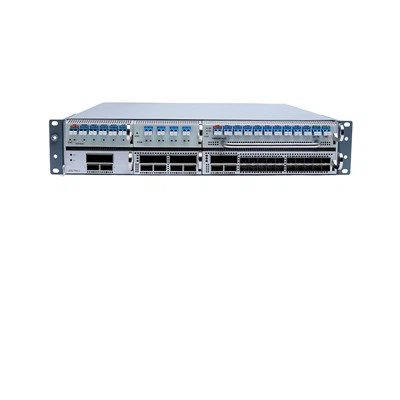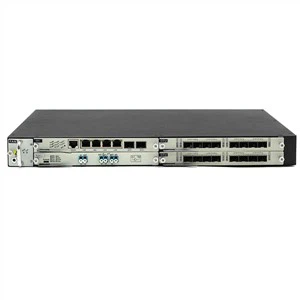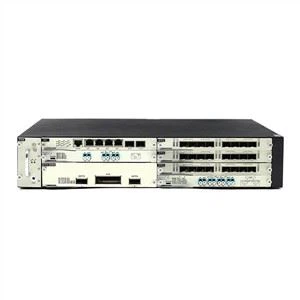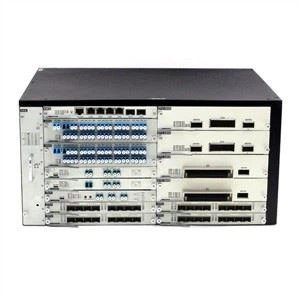The splitter is composed of entrance and exit slits, mirrors and dispersive elements. Its function is to separate the required resonance absorption lines. The key component of the spectrometer is the dispersive element, now commercial instruments are using grating.
Usage scenarios:
Optical splitter, also known as OBD, is a kind of passive equipment which is connected to FTTH. It is generally used by operators in the communication industry who need access in the home broadband side.
The OLT in the computer room is connected to the fiber distribution box through the OLT terminal side. At this time, there are two situations:
1. One level mode, one level light splitting, use scene, countryside, shop. These optical delivery boxes and other boxes are large enough to accommodate the splitter of large splitter, and the splitter in the box is directly connected to the ont of the user's home.
2. Two level mode, one level and two level light splitting use scene city. These are generally the splitter in the cell optical junction box, that is, the first level splitter in the secondary mode comes out to the second level splitter in the corridor side and then to the ont in the user side.
The planning method of splitter determines the configuration principle
1. In order to ensure the compatibility and stability of the equipment, each set of optical data acquisition system (including main link optical splitter, replication link optical amplifier and replication link optical splitter) shall be integrated by the same manufacturer;
2. Because the splitter is a highly integrated, non modular one-time forming device, considering the subsequent scalability, if it is not fully configured, it should be fully configured;
3. The amplifier should be configured according to the actual scale;
4. In order to save the room space and facilitate the operation and maintenance, the splitter rack should be placed in the room as a unit;
5. Considering the security and stability of the link, it is required that the active and standby links should be placed independently.
As an important component of PON system (ONU, OLT and passive optical distribution network), the main function of splitter is to distribute downlink data and centralize uplink data. The splitter has one uplink interface and several downlink interfaces. The signal from the uplink optical interface will be distributed to all the downlink optical interfaces for transmission, and the data from the downlink has only one uplink transmission port. Only when the optical signal goes from uplink to downlink, the optical signal strength / optical power will decrease, and the same is true when it goes from downlink to uplink. Moreover, the output strength of each downlink interface can be the same or different. In the single-mode fiber transmission, the transmission of light mainly depends on the core, but there is still a certain amount of energy is transmitted through the cladding close to the core, that is to say, if the two cores are close enough, the optical signal can be redistributed in the two fibers. The spectrometer is to play the role of distribution.
Optical splitter (optical splitter) is a connecting device of multiple inputs and outputs, which can realize the coupling, branching and distribution of optical signals in optical network system. It is the most important part of optical fiber link. M × n is commonly used to indicate that a splitter has m inputs and N outputs. Nowadays, the splitters used in the network are generally 1 × 2 and 1 × 4 splitters.
What is the light attenuation of the splitter? How to calculate?
The four common specifications of the splitter are wavelength, insertion loss, additional loss and splitting ratio. In fact, the most important index of the spectrometer is the different light decay of the spectrometer under the specific light splitting ratio. Under the condition of different light splitting ratio, the light decay of the spectrometer will not be different.
How to calculate the light attenuation of the splitter?
The optical attenuation value of the splitter = transmission optical power + additional loss + insertion loss + bare fiber loss.
1. Calculation of the splitting ratio of the splitter
Formula: ki = pi / SP * 100% (PI is the driving power required for each optical link, SP is the sum of the driving power required for each optical link of the laser.)
2. Calculation of additional loss
In the process of actual operation, the additional loss value can be measured, and it only needs to detect and record the value according to certain operation specifications, so as to do a good job in the classification of different links.
Generally, the losses of 1 × n single-mode standard beam splitter are as follows:
Number of branches | 2 | 3 | 4 | 5 | 6 | 7 | 8 | 9 | 10 | 11 | 12 | 16 |
Additional loss / dB | 0.2 | 0.3 | 0.4 | 0.45 | 0.5 | 0.55 | 0.6 | 0.7 | 0.8 | 0.8 | 1.0 | 1.2 |
3. Insertion loss calculation
Formula: Il = - 10lg (PO / PI) (PO is the optical power at the output, PI is the optical power at the input.)
4. Calculation of bare fiber loss
In practice, this value does not need to be calculated and has a certain reference standard. It is necessary to strictly refer to the numerical standard and measure the loss values of different wavelengths to determine the final loss value.
Wavelength | Attenuation coefficient of optical fiber (reference value) |
1310nm | 0.3~0.4dB/km |
1550nm | 0.15~0.25dB/km |
850nm | 3.75dB/km |
What are the types of spectrometers? How to choose the splitter?
According to the different application range, the light splitter can be divided into box type, tray type, rack type and wall mounted type. The box type splitter is generally used for optical fiber distribution box, etc.; the tray type splitter is generally used for ODF optical fiber distribution frame and optical cable junction box, etc.; the rack type splitter is installed in the standard rack; the wall mounted splitter can be installed on the wall.
From the technical point of view, there are two types of optical splitter: hot melt taper and PLC planar waveguide. Generally speaking, 1 × 2 and 1 × 4 can use hot melt taper, and 1 × 4 and above are recommended to use PLC planar waveguide. PLC splitter adopts semiconductor technology, with good uniformity and channel uniformity. PON is the first choice for construction.
In the selection, we should pay attention to the working wavelength range, try to choose 1260nm ~ 1650nm full band, some manufacturers' insertion loss index can be divided into superior products and standard products, if the system wants to transmit CATV video signal, we should also pay attention to the return loss index.
According to the different manufacturing process, the splitter can be divided into two types: fused taper splitter and planar waveguide splitter. The planar waveguide splitter is widely used in FTTx and PON. The fused taper splitter is formed by fusing two or more fibers on the side; the planar waveguide splitter (PLC) is a micro optical component product, which uses lithography technology to form optical waveguide on the dielectric or semiconductor substrate to realize branch distribution function. The splitting principle of these two types of splitters is similar. They both realize different branching amount by changing the evanescent field coupling (coupling degree, coupling length) and changing the fiber radius.
In addition, the splitter can be divided into 1 × 2, 1 × 4, 1 × 8, 1 × 16, 1 × 32, 1 × 64 splitter according to the different splitting ratio.
In the face of the above many types of splitter, how to choose? We can first determine the application situation and select the appropriate splitter according to the actual needs. For example, in the situation where there are few branches and the optical wavelength is not sensitive (that is, only 1 × 2 or 1 × 4 is enough), we can choose the fused tapered splitter; in the situation where there are multiple wavelengths (that is, more than 1 × 4) such as FTTH, we can choose the planar waveguide (PLC) splitter, because the planar waveguide type is not suitable( The light distribution is consistent and the channel is uniform.
HTF's optical fiber products are customized, the quality is guaranteed, and the accessories are imported.
Skype :sales5_ 1909,WeChat :16635025029
Contact: support@htfuture.com





















